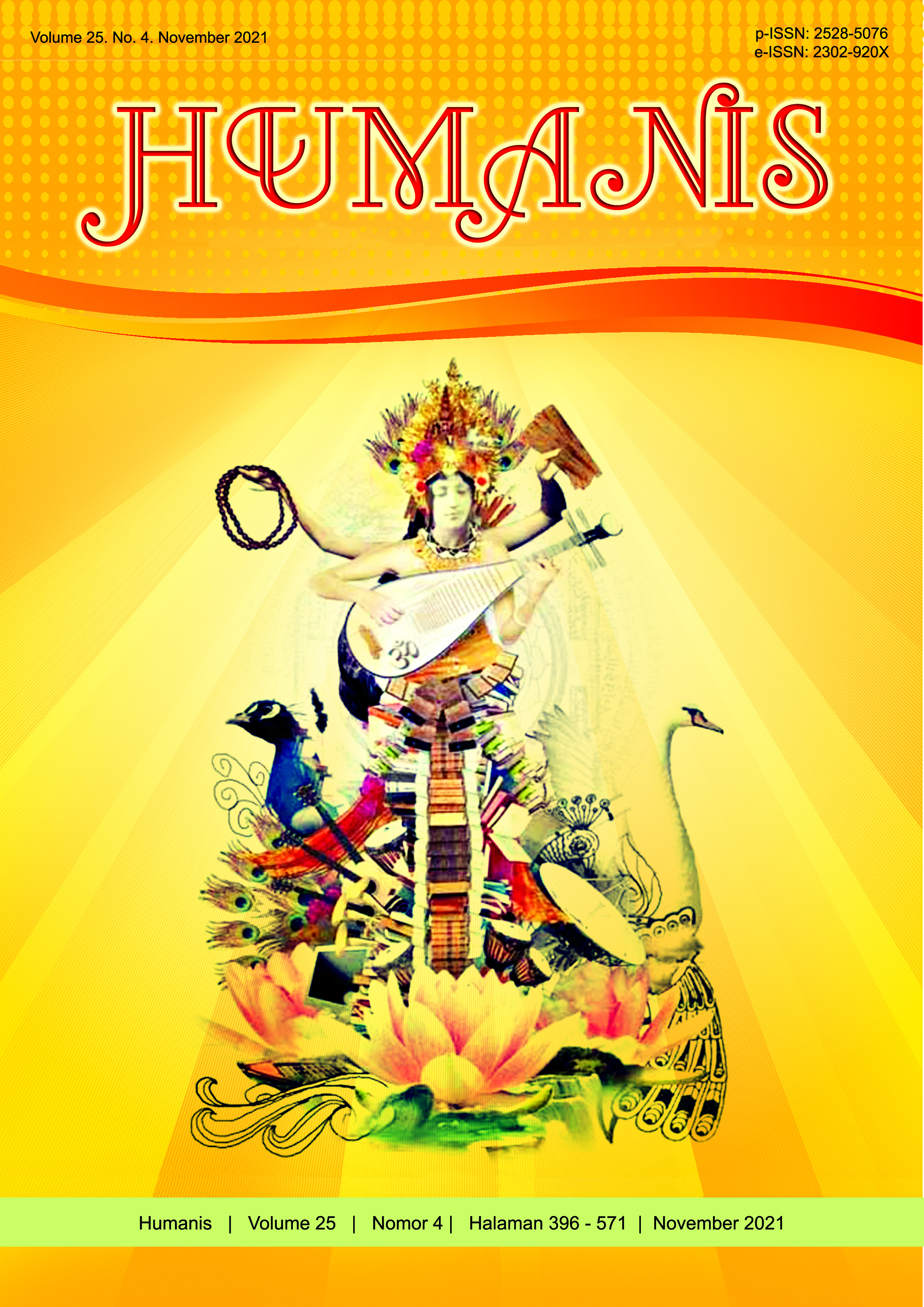Compound Nouns Found in The Jakarta Post Website
Abstract
This study is aimed to identify the types of compound nouns and analyze the meanings of compound nouns conveyed on The Jakarta Post website. Two theories applied in this study, the theory of compound proposed by Katamba and the theory of meaning proposed by Palmer. Eight articles from The Jakarta Post website were chosen as the data source. The selected articles are related to technology, lifestyle, and business from December 2020 until February 2021. Documentation method and note-taking technique used in collecting the data. The collected data was analyzed by using a descriptive qualitative method and triangulation technique. Meanwhile, in presenting the data analysis, this study used formal and informal methods. The result shows that all types of compound nouns based on the theory applied are found in the data source. The types are: noun + noun, adjective + noun, and preposition + noun. In terms of meaning, there are transparent and opaque meanings.
Downloads
References
Aronoff, M., and Fudeman, K. (2011). What is Morphology? 2nd ed. United Kingdom: Wiley Blackwell.
Bennett, P. (2002). English Adjective-Noun Compounds and Related Constructions. GEMA Online Journal of Language Studies, Volume 2, pp. 1-10.
Booij, G. (2002). The Grammar of Words: An Introduction to Linguistic Morphology. 2nd ed. New York: Oxford University Press Inc.
Cahyanti, R. D., 2016. Compound Word Used in Stephenie Meyer's Twilight. Journal on English as a Foreign Language, 6(1), pp. 59-70.
Creswell, J. W., and Creswell, J. D. (2017). Research Design: Qualitative, Quantitative, and Mixed Methods Approaches. 5th ed. United Kingdom: SAGE Publications, Inc.
Damayanti, L. (2020). Compound Words Found in Seventy-Seven Thousand Service-Trees (Sri Chinmoy). e-Journal of Linguistics, Volume 14, pp. 268-275.
Hikmaharyanti, P. D. A. (2020). Indonesian-English Compound Word Equivalence. International Journal of Language and Cultural, II(01), pp. 75-86.
Indrawati, N. L. K. M. (2013). Noun Compound in English. Lingual Journal of Language and Culture, Volume 1.
Katamba, F. (1993). Morphology. London: Macmillan Press Ltd.
Leech, G. (2006). A Glossary of English Grammar. Edinburgh: Edinburgh University Press Ltd.
Lieber, R. (2009). Introducing Morphology. Cambridge: Cambridge University Press.
Lyons, J. (1977). Semantics. Cambridge: Cambridge University Press.
Matthews, P. H. (1996). Morphology. 2nd ed. Cambridge: Cambridge University Press.
O'Grady, W., and Guzman. (1996). Contemporary Linguistics: An Introduction. United Kingdom: Longman.
Palmer, F. R. (1981). Semantics. Cambridge: Cambridge University Press.
Plag, I. (2003). Word-formation in English. New York: Cambridge University Press.
Pratiwi, M. D. 2018. English Compound Nouns in Short Story "The Star Child" by Oscar Wilde. Jurnal Humanis, 23(1), pp. 148-155.
Scalise, S. (2010). Cross-Disciplinary Issues in Compounding. Amsterdam: John Benyamin Publishing.
Szymanek, B. (1989). Introduction to Morphological Analysis. Warszawa: Pantswowe Wydawinictwo Naukowe.
Wisniewski, K. (2007). Word Formation Processes: How New Words Develop in the English Language. New York: Blackwell.


















